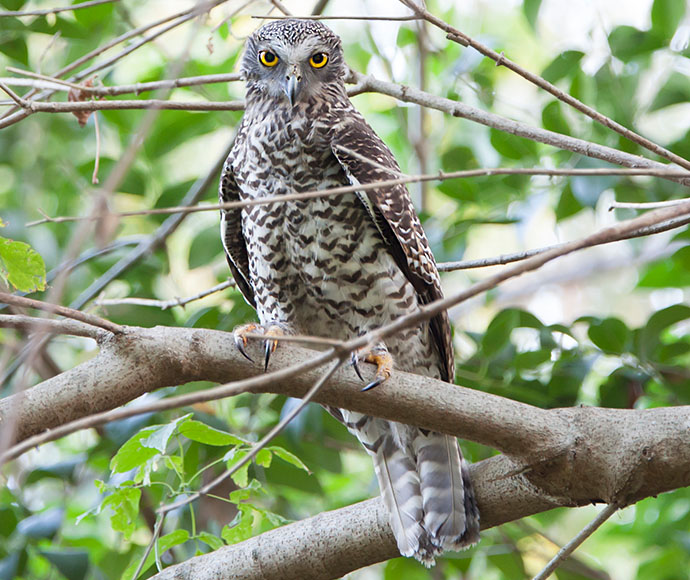Feathered friends in Richmond–Clarence to benefit from $1.19 million grant
Native owls in the Richmond–Clarence lowlands will soon benefit from a $1.19 million large-scale habitat recovery and improvement project, thanks to funding from the NSW Environmental Trust.
NSW Department of Planning and Environment Project Officer Erin Rowe said the project, led by the Nature Conservation Council, will create more resilient and connected areas of habitat for owls and other hollow-dependent species which were catastrophically impacted by the 2019–20 bushfires.
“The presence of resident populations of large forest owls in a landscape is a good indicator of healthy and functional forest ecosystems,” Ms Rowe said.
“The lowlands of the Richmond–Clarence area are a key stronghold for three vulnerable owl species – the barking owl, masked owl and the powerful owl.
“Sadly, the 2019–20 bushfires led to the destruction of a significant proportion of large hollow-bearing trees in the Richmond–Clarence lowlands.
“The loss of these trees is disastrous for owls, and other arboreal hollow-dependent mammals, depriving them of nesting opportunities, shelter, denning and breeding sites.
“Over the past few years, it has become clear that our business-as-usual response to threatened species conservation would not be enough to protect these incredible birds in the Richmond–Clarence area.
“An innovative, large-scale conservation and habitat restoration project was urgently required.
“The Nature Conservation Council ‘Safe Havens’ project is a comprehensive blueprint for on-ground management actions which will support the recovery of large forest owls by protecting and enhancing key nesting sites.”
Nature Conservation Council Project Manager Kate McShea said the ‘Safe Havens’ project will deliver better habitat connectivity and resilience, and a more informed community of stakeholders capable of continuing the important work of conserving large forest owls in the Richmond–Clarence Lowlands.
“Our project will build on strategic partnerships with government and non-government organisations and Indigenous and non-Indigenous private landholders that we’ve built over the last decade,” Ms McShea said.
“Together with our project partners, we’ll set up a passive acoustic network, undertake spotlight surveys, plan and install artificial hollows and nest boxes, and take direct action to protect hollow-bearing trees in the region.
“Through landholder outreach and workshops, we’ll provide landholders across the Richmond–Clarence Lowlands region with the training and tools to monitor and maintain populations of these critical species on their properties for the long term.
“We hope the actions we undertake as part of this grant will continue to deliver positive outcomes beyond the life of our project, benefiting future conservation programs in the region, building landholder capacity and guiding decisions around property, land and fire management.”
The project will be delivered over 3 years.
The NSW Environmental Trust is an independent statutory body that supports environmental projects through grant funding.
